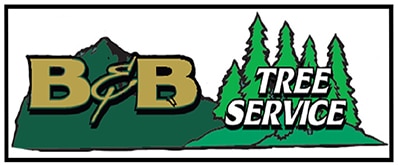Creating a landscape that you can be proud of involves more than just a green lawn and colorful flowers. Trees play a vital role in enhancing the beauty and functionality of your outdoor space. However, selecting the best trees for your landscape is crucial for long-term success. This guide explores the factors to consider when choosing trees and provides insights into making intelligent selections that complement your property.
Climate Considerations:
One of the key factors in selecting the right trees is considering your local climate. Different trees thrive in different climates, so choosing species well-suited to your region’s temperature, rainfall, and soil conditions is essential. This not only ensures the health of your trees but also reduces maintenance efforts.
Space Planning:
Before planting a tree, carefully assess the available space in your landscape. Consider the tree’s mature size and ensure it won’t interfere with structures, power lines, or other trees. Planting too close to buildings can lead to root damage and overhanging branches, so plan for vertical and horizontal growth.
Soil Quality:
Different trees have specific soil requirements. Some thrive in well-drained soils, while others prefer moist or acidic conditions. Conduct a soil test to understand your soil’s composition, and choose compatible trees. Amending the soil as needed before planting will contribute to your trees’ overall health and longevity.
- Well-Drained Soils:
- Crepe Myrtle (Lagerstroemia spp.): These trees prefer well-drained soils and are well-suited for landscapes with good drainage. They are known for their vibrant summer blooms and attractive bark.
- Amur Maple (Acer ginnala): With a preference for well-drained soils, the Amur Maple is a hardy and adaptable tree that provides colorful fall foliage.
- Moist Soils:
- River Birch (Betula nigra): Thriving in moist soils, River Birch is a beautiful tree with unique peeling bark. It’s an excellent choice for areas with consistently moist conditions.
- Willow (Salix spp.): Willows are often found near water bodies and have a high tolerance for moist soils. They are known for their graceful, weeping branches.
- Acidic Soils:
- Blueberry Bush (Vaccinium spp.): While not a tree, blueberry bushes are well-suited to acidic soils. They offer both beautiful foliage and edible berries.
- Pin Oak (Quercus palustris): Tolerant of acidic soils, Pin Oaks are deciduous trees that provide shade and have distinctive, deeply lobed leaves.
- Alkaline Soils:
- Lacebark Elm (Ulmus parvifolia): These trees can tolerate various soil pH levels, including slightly alkaline soils. Lacebark Elms are known for their attractive exfoliating bark.
- Callery Pear (Pyrus calleryana): Callery Pears, also known as Bradford Pears, are adaptable to different soil types, including mildly alkaline soils. They feature a profusion of white spring blooms.
Before planting, it’s advisable to conduct a soil test to understand your soil’s specific pH and nutrient levels. This information will help you choose trees that are not only visually appealing but also well-matched to the soil conditions of your landscape.
Maintenance Needs:
Consider the level of maintenance you’re willing to commit to. Some trees require regular pruning, while others are relatively low-maintenance. Choose trees that align with your time and energy constraints to ensure a sustainable and thriving landscape.
Aesthetic Appeal:
Trees contribute significantly to the aesthetics of your landscape. Consider the color, shape, and seasonal interest of the trees you’re interested in. Whether you prefer vibrant autumn foliage, year-round greenery, or blossoms in the spring, select trees that align with your desired visual impact.
- Japanese Maple (Acer palmatum): Known for its stunning foliage that turns vibrant shades of red, orange, and purple in the fall. Japanese Maples come in various shapes and sizes, making them versatile for different landscape designs.
- Dogwood (Cornus florida): With its elegant white or pink flowers in spring and attractive red berries in the fall, Dogwoods add visual interest year-round. They also have a distinct branching pattern that enhances the winter landscape.
- Crape Myrtle (Lagerstroemia spp.): These trees offer vibrant summer blooms in pink, red, or purple hues. They are well-suited for warm climates and bring color to your landscape during the hot months.
Native and Non-Native Species:
Choosing native trees can provide numerous benefits, such as attracting local wildlife and promoting ecological balance. However, well-adapted non-native species can also thrive in certain environments. Strike a balance between native and non-native trees to create a diverse and resilient landscape.
- Eastern Redbud (Cercis canadensis): A native tree in North America, the Eastern Redbud boasts striking pink or lavender flowers in early spring. It’s well-suited to various soil types and attracts pollinators.
- Ginkgo Biloba: Although native to China, the Ginkgo is a hardy and adaptable tree widely planted worldwide. It’s known for its unique fan-shaped leaves and vibrant yellow foliage in the fall.
- White Oak (Quercus alba): As a native species in North America, White Oaks are majestic and provide essential ecological benefits. They support diverse wildlife and contribute to the local ecosystem.
Navigating the Landscape of Smart Tree Selection:
Selecting suitable trees for your landscape involves a thoughtful and informed approach. By considering climate, space, soil, maintenance needs, aesthetic preferences, and ecological impact, you can make intelligent choices contributing to a beautiful and sustainable outdoor environment. Take the time to research and plan, and you’ll be rewarded with a thriving landscape that enhances your property’s overall appeal and value.

